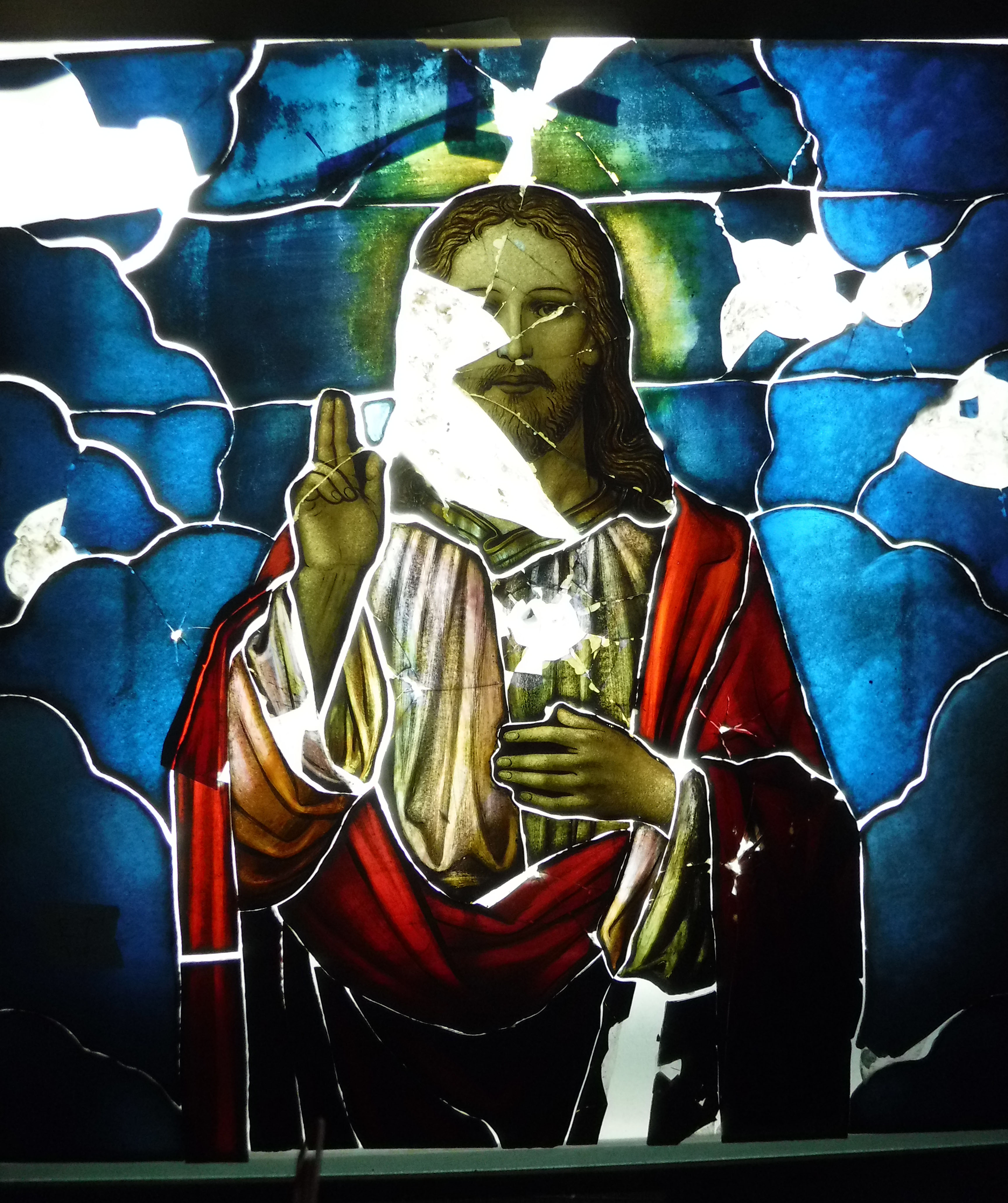
Twenty-three years ago, architect Bill Spack ‘82 was tapped for an unusual assignment: Accompany Arlington County historic preservationists to a derelict mausoleum slated for demolition on the edge of Arlington National Cemetery to see if anything could be saved. The 13 stained-glass windows they discovered adorning the sacred site were badly damaged, but beautiful—and, unlike the building, could potentially be resurrected.
What they didn’t know then, were the windows’ own divine origin: Original works by world-renowned glass-making artist Louis Comfort Tiffany, son of wealthy jeweler Charles Lewis Tiffany, the founder of the jewelry company Tiffany & Co.
Thus began a painstaking effort by Spack, Arlington County, nonprofits and several stained glass experts to help restore and relocate the nearly century-old works of art to public buildings across the county. The last of them—a depiction of Jesus Christ titled “Christ in Blessing”—found sanctuary earlier this year in the vestibule of the new Central United Methodist Church in Arlington, Virginia.
The 13 windows were once the crown jewels of the Abbey Mausoleum, a prestigious burial ground built between 1924 and 1926 for nearly 300 affluent individuals who resided in Northern Virginia and Washington, D.C. in the early 20th century. The mausoleum fell into despair when the managing corporation went bankrupt in the early 1950s. It soon fell victim to neglect and vandalism; the U.S. government made the decision to tear it down, but offered Arlington County an opportunity to salvage any items they thought were valuable.

“[The windows] were really in disrepair,” said Spack, a founding partner and principal of CGS Architects in Washington, DC. “There had been a lot of vandalism, but you could tell that at their core, they were really a beautiful resource.”
Spack, who served as the chairman of the Design Review Committee for the Historical Affairs and Landmark Review Board in Arlington County, was the architect of record on the first three initiatives, which integrated restored windows into the Museum of Contemporary Art Arlington, Fairlington Community Center and the Reed School/Westover Library. He was instrumental in identifying the buildings, as well as guiding the placement and installation of the windows.
"Christ in Blessing" sat in storage for more than 20 years after it was recovered from the mausoleum, making it the last of the 13 stained-glass windows to be restored. The window was dedicated to E. St. Clair Thompson, a wealthy Mason who was interred at the Abbey Mausoleum in 1933. It is the only piece from the collection that has the enamel inscription, “Louis C. Tiffany NY.” Composed of twelve panels of colorful, single-layer, mouth-blown glass with silver stain highlights, it took Washington Art Glass Studio one year to repair the damage and return the piece to its original state.
The county worked with Spack and the site’s principal architect, Davis Carter Scott Architects, to have the piece installed outside the Central United Methodist Church’s sanctuary to fulfill the project's public art community benefit mandate. Since its installation in February, “Christ in Blessing” serves as a symbol of rebirth and revival—and exemplifies the significance of Arlington's built history.
"Arlington County had inherited a very important and extremely valuable historic resource," said Spack. "The other windows were really beautiful, but this window was extraordinary just based on the craftsmanship of the glass."
The unveiling of “Christ in Blessing” in April not only marked the installation of the last Tiffany Studios piece from the mausoleum collection, but also signified the county’s commitment to ensuring that valuable, historic resources are utilized for the highest public benefit, which has been a theme of his practice.
"I think art can enhance architecture," he said. "Ironically, this is about bringing the stained glass window back and reviving it in a broader sense. And, that's what we think about with preservation. It's about taking a resource and injecting new life into it to accommodate new functions and needs."
Angela Anderson Adams, the director of Arlington Public Art, applauds Spack's efforts in incorporating art, historic preservation and architecture into a unique context to enhance the interior environment of the buildings that house the historic glass window pieces.
"We didn't want the art to suffer, so Bill was the champion for the art," she said. "He was able to embrace this idea and see the value in it, which really speaks to his ability to see beyond the technicalities of being an architect and look at the big picture of what would make these four buildings as good as they can be and incorporate a piece of Arlington's history into the fabric of our community."


